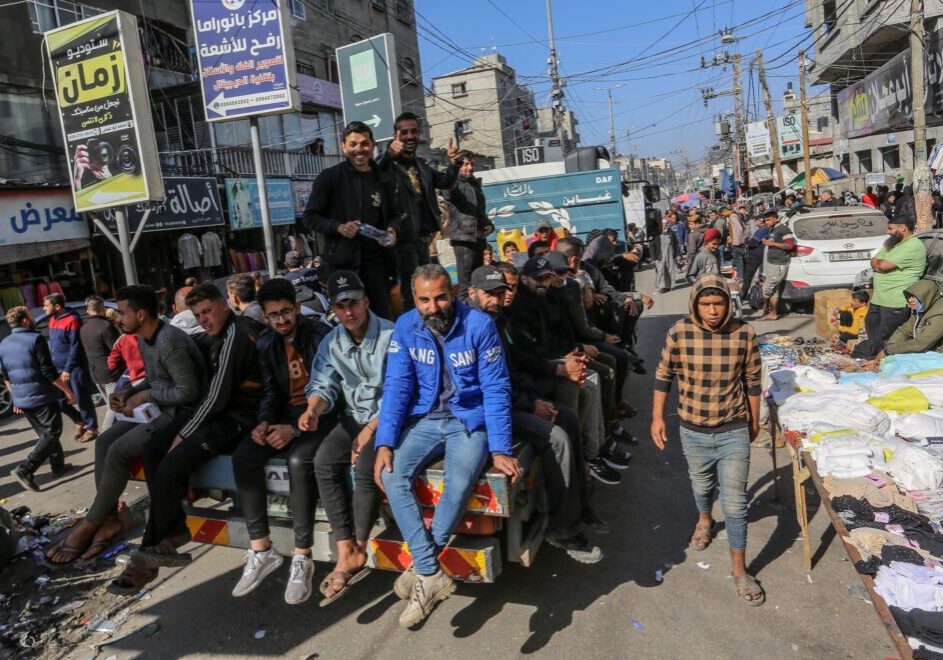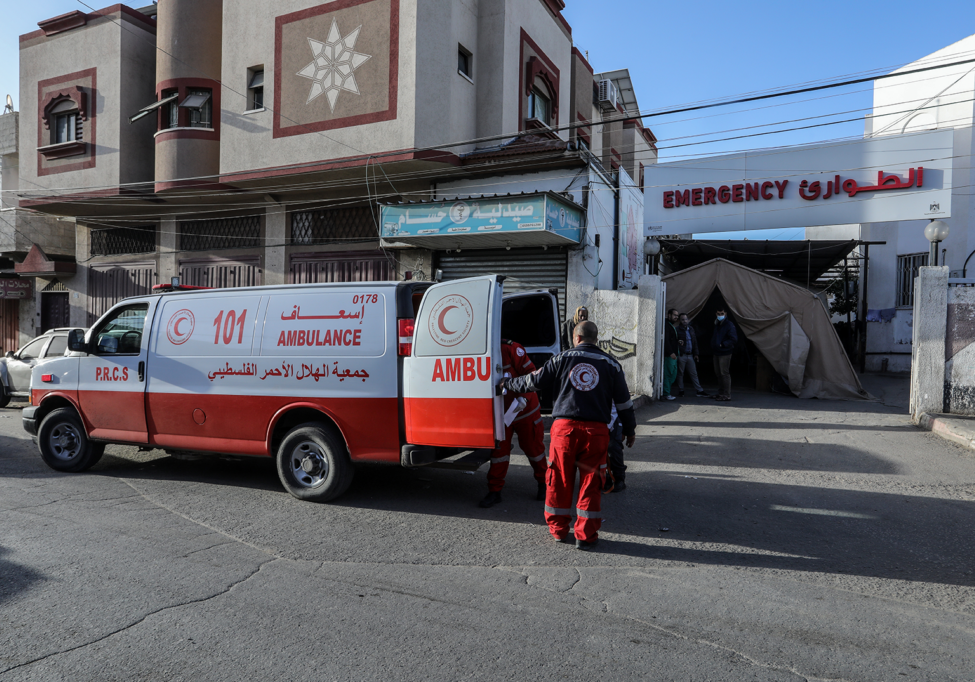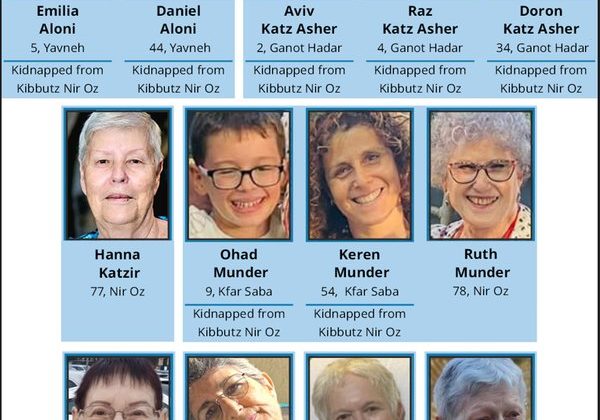FRESH AIR
No, Gaza is not “the hungriest place on earth”
June 8, 2025 | AIJAC staff

Just a couple of weeks after United Nations’ humanitarian chief Tom Fletcher embarrassed himself and the UN by falsely claiming on the BBC, “There are 14,000 babies [in Gaza] that will die in the next 48 hours unless we can reach them,” United Nations Office for the Coordination of Humanitarian Affairs (OCHA) spokesperson Jens Laerke had a similar fit of hyperbole, claiming that “Gaza is the hungriest place on earth.” He clearly had not checked his declaration with the World Food Programme (WFP) or hunger-tracking NGOs such as Action Against Hunger or Concern Worldwide.
Nobody would argue the current food situation in Gaza is ideal by any standards, but despite the war and looting, around 100 UN food trucks are entering Gaza every day, while the Gaza Humanitarian Foundation has handed out more than 8.4 million meals via three active distribution sites since the end of May, with the aim to soon reach about 4.5 million meals dispensed daily. While there are certainly shortages in the meantime, Gaza is very far from the hungriest place on earth.
According to Action Against Hunger, the hungriest places on earth are South Sudan, Burkina Faso, and Mali.
The 2024 Global Hunger Index, published by Concern Worldwide and Welthungerhilfe, lists the top 10 hungriest countries as follows: the oft-forgotten North Korea, the Central African Republic, Liberia, Niger, Haiti, Democratic Republic of Congo, Madagascar, Chad, Yemen, and Somalia.
Afghanistan’s hunger crisis also merits an honourable mention by the WFP.
Haiti is also a disaster, with the WFP reporting that:
A total 5.7 million Haitians – half the population – do not have enough to eat. Over 2 million of these are facing emergency levels of food insecurity. The number of internally displaced people (IDPs) has risen to more than 700,000 people – more than a threefold increase compared to August 2023 – following clashes between armed groups. In addition, nearly 277,000 children are suffering from acute malnutrition, and 125,000 are severely malnourished.
Sudan, meanwhile, is universally agreed to be the world’s worst humanitarian crisis currently. When it comes to food, it is getting worse every day. According to the WFP:
Sudan risks becoming the world’s largest hunger crisis in recent history… A protracted famine is taking hold – the only place in the world at this level of hunger – and without humanitarian assistance, hundreds of thousands could die. Famine was confirmed in August 2024 in Zamzam IDP camp and has now spread to 10 areas in total. Hundreds of thousands of lives are at risk. An additional 17 areas are at risk of famine. A total of 24.6 million people (around half the population) are acutely food insecure, while 638,000 (the highest anywhere in the world) face catastrophic levels of hunger. Over 1 in 3 children are facing acute malnutrition – above the 20 percent threshold for a famine confirmation.
Analyst Mark Zlochin recently pointed out on X that, even according to the most recent UN Integrated Food Security Phase Classification (IPC) reports, multiple countries are hungrier than Gaza, including Afghanistan, Sudan, South Sudan, Chad and Somalia.
And that’s even if one trusts IPC projections, which have repeatedly failed to correctly predict anything in Gaza. As AIJAC wrote in July 2024, when the IPC’s Famine Review Committee (FRC) – the UN’s expert committee on identifying famine – released its review of the Famine Early Warning Systems Network (FEWS NET) analysis:
Asserting that the analysis had made unwarranted assumptions and inexplicably excluded important sources of food aid – and that there simply wasn’t nearly enough solid data – the FRC said it didn’t find the FEWS NET analysis claiming Gaza was suffering famine “plausible”. A comprehensive FRC report published June 25 concluded that “the available evidence does not indicate that Famine is currently occurring.”
The difference in estimates for kilocalories per person of the food aid entering Gaza between the FEWS NET analysis and that of the FRC is staggering. The highest estimate in the former’s original analysis said food aid entering Gaza amounted to only 51% of the population’s need. The FRC’s lowest estimate said aid entering amounted to 109% of the population’s need.
The latest “Hunger Hotspots” report, published in November 2024 and projected through May 2025 by the WFP and Food and Agriculture Organization of the United Nations (FAO), did put “Palestine” as one the areas of highest concern based on the previously mentioned inaccurate IPC projections.
Gaza, according to the 2024 FAO-WFP projection, had the highest proportion of the population in IPC Phase 5 (Catastrophe) among all countries listed and the second highest number of people in absolute terms after Sudan. The report claimed (p. 18):
About 1.9 million people (91 percent of the analysed population) across the Gaza Strip will likely experience Crisis or worse levels of acute food insecurity (IPC Phase 3 or above) including 876, 000 people (41 percent of the analysed population) in Emergency (IPC Phase 4), and nearly 345, 000 people (16 percent of the analysed population) who will likely experience catastrophic food insecurity (IPC Phase 5).
However, the report was written months before the January 2025 ceasefire and massive surge of aid. From the ceasefire on January 19 to the aid cutoff on March 2, the Coordinator of Government Activities in the Territories (COGAT) says 25,200 aid trucks entered Gaza carrying 447,538 tons of aid. The UN said in mid-February that around 600 aid trucks were entering per day, although some days it was far more. Although Israel subsequently imposed an aid blockade for three months, the amount of aid that had entered during the ceasefire essentially cancelled out any shortfalls.
The report was also written long before the Gaza Humanitarian Foundation began operations and 100 or so trucks a day began entering Gaza again. Its flawed projections and the false assumptions upon which they are based can thus be safely ignored.
The IPC, Concern Worldwide, Action Against Hunger and others all have different methodologies and varying, doubtful levels of reliability given the difficulty of gathering genuine statistics in warzones, developing countries and failed states. Yet none of their respective underlying data show Gaza to be the hungriest place on earth.
Obviously, the UN isn’t going to stop lying or putting out hyperbolic, hysterical statements when it comes to Israel. However, everyone else should at least know enough by now to ignore them.
Tags: Gaza, Israel, NGOs, Palestinians, United Nations























